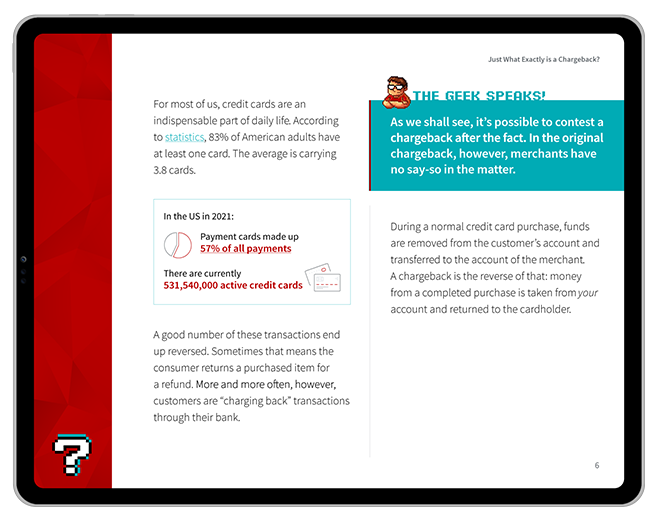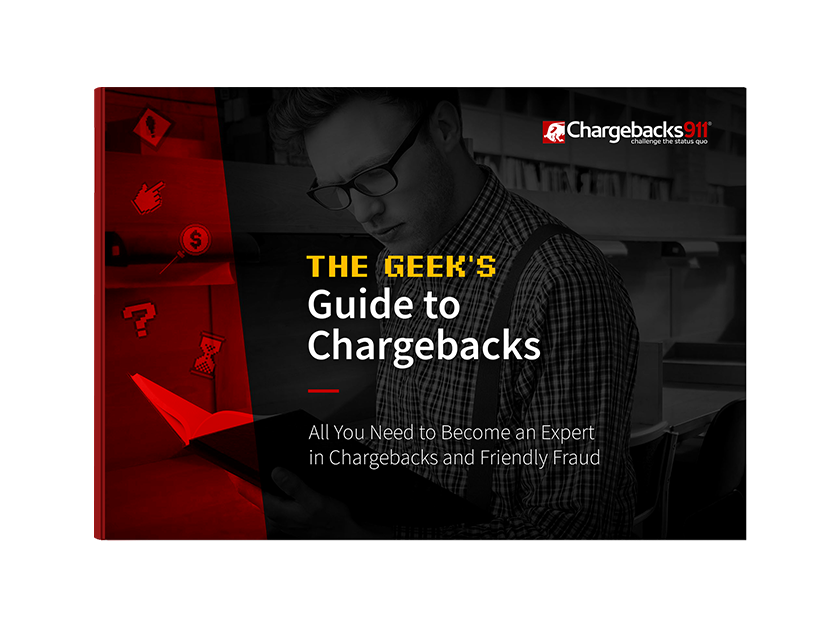Can Delivery Confirmation Help Prevent Disputes & Chargebacks?
Requesting delivery confirmation for purchases offers a lot of benefits to you as a merchant. It’s proof that an order was sent, as well as evidence of the time and place at which the order arrived. However, many merchants remain hesitant about whether it’s really necessary.
With the boom in eCommerce, a growing number of customers already insist on discounted or free shipping. You could be (understandably) hesitant to add any extra perks that may increase costs. On the other hand, research shows that delivery confirmation can be an effective component of a chargeback prevention strategy.
Before we get too far into the weeds, though, let’s start with the most basic question: what is delivery confirmation, and how does it work?
Recommended reading
- Chargeback Ratio: 8 Important Things to Know in 2024
- Prevent Double Refund Chargebacks & Unnecessary Losses
- What’s an “Acceptable” Chargeback Rate? Why Does it Matter?
- How to Find the Right Chargeback Management System
- Do Chargeback Bans Actually Help Stop Disputes?
- What is a Chargeback Analyst? Do You Need to Hire One?
What is Delivery Confirmation?
- Delivery Confirmation
Delivery confirmation is an electronic notification received from a shipping provider. This notification informs the sender that a shipment has reached its final destination.
[noun]/dē • liv • ər • ē • kän • fər • mā • SHən/
In simple terms, delivery confirmation is a note from your shipping carrier telling you that a package was delivered. That’s a good thing, but it’s important to note that delivery is not the same as receiving the packing.
As a merchant, you want to ensure that each order gets all the way to the intended recipient. This is important for customer satisfaction, as well as for your own liability protection.
Delivery confirmation provides specific information as to when, where, and how a delivery happened. This information is a crucial asset in the fight against chargebacks.
What Information Does Delivery Confirmation Provide?
Different delivery services each offer their own branded form of delivery confirmation. We’ll delve into the specifics of each later, but all perform the same basic function of letting you know that an order was delivered. This is called confirmation of receipt.
Confirmation of receipt is a basic acknowledgment that the intended recipient has received the information. In the context of emails or messaging, this might be an automatic notification sent to the sender when the recipient opens the message.
Of course, you may also get additional information, including:
The confirmation often includes the exact date and time when the information was delivered and/or received. This is crucial in time-sensitive communications to establish when the information was available to the recipient.
Providers usually specify who received the goods shipped. This could be an email address, a phone number, or a physical address in the case of postal mail.
Information about the sender might also be included, especially in formal or business communications. This helps in maintaining a record of who sent the information and when.
In some cases, especially in legal or official documents, there might be a summary or a brief description of the content that was delivered. This ensures that both parties are aware of what specific information was communicated.
This specifies how the information was delivered. For instance, whether the shipment arrived via email (in the case of digital goods), postal service, fax, etc.
A unique confirmation or reference number is provided in some systems. This can be used for tracking shipments, or for future reference if transaction data needs to be recalled.
For digital communications, there may be an indication of whether the recipient opened or read the message containing the goods shipped.
In certain contexts, a delivery confirmation might include a formal acknowledgment or a statement indicating the recipient's understanding or acceptance of the information.
Sometimes, the confirmation might include what steps need to be taken next, along with any necessary instructions related to the information delivered.
The specifics of what is included in an information delivery confirmation can vary significantly based on the method of communication, the nature of the information, and the needs of the parties involved.
Why Is Delivery Confirmation Important?
Delivery confirmation is a logistical step in the process. It’s a key element in customer satisfaction and operational efficiency. It can offer:

In short, delivery confirmation isn't just about ticking a box. It’s a crucial function that enhances the customer experience, strengthens business operations, and provides vital protection in financial transactions.
Different Brands of Delivery Confirmation
The delivery confirmation services offered by major carriers like USPS, UPS, and FedEx are essential tools for both senders and recipients. Each service has its unique features:
USPS Proof of Delivery
Proof of Delivery is a service that provides senders with a letter or email containing the delivery information and an image of the recipient's signature (if available). This is especially useful for important documents or high-value items.The key feature here is the inclusion of the recipient's signature, which is a strong form of identification validation. USPS focuses on providing proof with a signature, making it ideal for legal documents or sensitive shipments for which the recipient's acknowledgment is crucial.
UPS Complete View Confirm
UPS Complete View Confirm extends beyond basic delivery confirmation. It provides detailed tracking information and delivery notifications. Customers can view the status of their shipments in real-time, with updates at each stage of the delivery process.The standout feature of this service is its comprehensive tracking capability. This allows both sender and recipient to monitor the package's journey closely.
FedEx Picture Proof of Delivery
FedEx Picture Proof of Delivery is a new feature, allowing customers to receive a photograph showing the package at the delivery location. This can be reassuring for customers who may not be present to receive the package themselves.The provision of a photograph is a tangible and visual proof of delivery, which is especially helpful in confirming that the package was left in a safe and specified location.
While all three services aim to ensure delivery confirmation, their differing approaches cater to various customer needs. USPS is signature-oriented, UPS emphasizes detailed tracking, and FedEx offers the added reassurance of visual proof. The choice between them depends on the specific requirements and preferences of the sender and recipient.
How Delivery Confirmation Can Influence Chargeback Settlement
We should talk a little about how delivery confirmation fits into a merchant’s chargeback management strategy.
Merchants may use delivery confirmation when fighting an invalid chargeback filed with a Merchandise Not Received reason code. Numerous situations could lead to a Merchandise Not Received chargeback. The most common claims include:
- Failing to ship the order by the agreed-upon date.
- Failing to ship the order at all.
- Billing the cardholder before shipping the order.
- Failing to make products available for pickup.
Any of these (or other) circumstances could be cause for a legitimate chargeback. But what if a merchant ships an order as promised, but the cardholder falsely claims the order was never delivered?
Under existing chargeback rules, it’s the merchant’s responsibility to disprove the cardholder’s claim. That can be difficult, which is why it’s important to use any evidence that might invalidate a claim before it’s filed.
What About Signature Confirmation for Delivery?
In most cases, delivery confirmation on its own will not be enough evidence to force a chargeback reversal. Like we mentioned before, there are still ways for cardholders to get around it.
Signature confirmation, however, may help merchants challenge disputes and prevent them in the future:
Prevention
Requiring a signature upon delivery means that packages are not left unattended, where they can be stolen. It can also help deter premeditated acts of chargeback abuse if you advertise that a signature will be required at delivery. Knowing you will have evidence against them, cyber shoplifters may simply move their chargeback scam to a less-savvy retailer.
Representment
A delivery signature is powerful evidence in the event that representment is required. A signature can benefit both merchants and honest customers. If the cardholder actually signed for the delivery, merchants will have tangible proof against friendly fraud. Cardholders, meanwhile, can ensure that valuable and high-ticket items do not end up in the hands of scammers.
In terms of chargeback management, delivery confirmation with a signature can be a great asset. So, why not use it for every order?
Not only is signature confirmation pricey, it can also lead to orders being sent back to the merchant if no one is available to sign for them. If this happens, the buyer may file a dispute; in that way, signature confirmation may actually cause more chargebacks.
For high-ticket items, especially those that can be easily resold, like jewelry or electronics, requiring a signature with delivery confirmation is a good idea. It’s not really recommended for average purchases, though. You have to consider the dynamics of the situation and determine if the added cost is justified.
Delivery Confirmation for Non-Physical Goods
With digital goods, there is no carrier service involved. Thus, proof of delivery is quite different… and often open to interpretation.
“Merchandise not received” claims for digital goods also fall under Visa reason code 13.1. According to Visa, the evidence required for representment includes “any documentation to prove that the cardholder or an authorized person received the merchandise or services at the agreed location or by the agreed date.”
This vague description is both helpful and harmful. On the one hand, since nothing is spelled out, merchants have options when accumulating delivery confirmation proof. Merchants can deploy:
- Cloud-Based Activation: This confirms delivery as soon as the consumer accesses the product key.
- Built-In Kill Switch: If the user files a chargeback, the merchant can terminate access to the service or product.
- Electronic signature page: Before use, the customers must indicate they have read and agree to the policies.
- Two-Step Authentication: This texts a code to customers, asking them to verify account information.
- Accurate Recordkeeping: Uses up-to-date data on IP addresses and other personal information for validation.
But, while any of these could be evidence of acceptance of delivery, Visa’s description is so broad that providing definitive, compelling evidence can be challenging. Using multiple methods seems redundant. However, it offers greater protection in the end.
Thinking About the Big Picture
Delivery confirmation with a signature can be a helpful tool in recovering lost revenue and lowering chargeback risk. It can be especially helpful for big-ticket purchases and/or items delivered digitally.
That said, no single technique is 100% successful at preventing or disputing chargebacks. There are many points where the protection mechanism can break down:
- Carrier personnel can make mistakes.
- Criminals can forge cardholders’ signatures or steal unattended packages.
- Friendly fraudsters can make claims that are hard to disprove.
Again, the chargeback representment process is subjective. Evidence that’s considered sufficient at one bank may not be enough at another. In fact, opinions can vary even within a single issuer’s chargeback department. Plus, even if merchants could prevent all “merchandise not received” claims with delivery confirmation, there are many other reason codes that merchants need to worry about.
We can’t expect piecemeal chargeback management implementation to be effective. Merchants have to analyze their overall goals and objectives and create a long-term strategy for reducing chargebacks and recovering lost funds.
Are you looking for a way to prevent disputes? The experts at Chargebacks911® can create a custom comprehensive chargeback management solution suited to the unique needs of your business. Contact us today for a free chargeback analysis and see how much you could save.
FAQs
What is delivery confirmation?
Delivery confirmation is a written or electronic notification received from a shipping provider. This notification informs the sender that a shipment has reached its final destination.
How do I confirm my USPS delivery confirmation?
USPS's Proof of Delivery is a service that provides senders with a letter or email containing the delivery information and an image of the recipient's signature (if available). This is especially useful for important documents or high-value items.
How do you get delivery confirmation?
You can get delivery confirmation by choosing a shipping service that offers this feature, such as USPS, UPS, or FedEx, and then selecting the delivery confirmation option when creating a shipping label for the package. This service typically provides tracking and confirmation details either online or via email once the package is delivered.
Does delivery confirmation mean tracking?
Delivery confirmation is not the same as tracking. It simply verifies the delivery of a package, whereas tracking provides detailed information about a package's journey and current location throughout the shipping process. Tracking often includes delivery confirmation as part of its service.
Does delivery confirmation require a signature?
Delivery confirmation does not always require a signature. It primarily confirms that a package has been delivered, with or without a signature. However, some services offer the option of a signature as additional proof of delivery.













